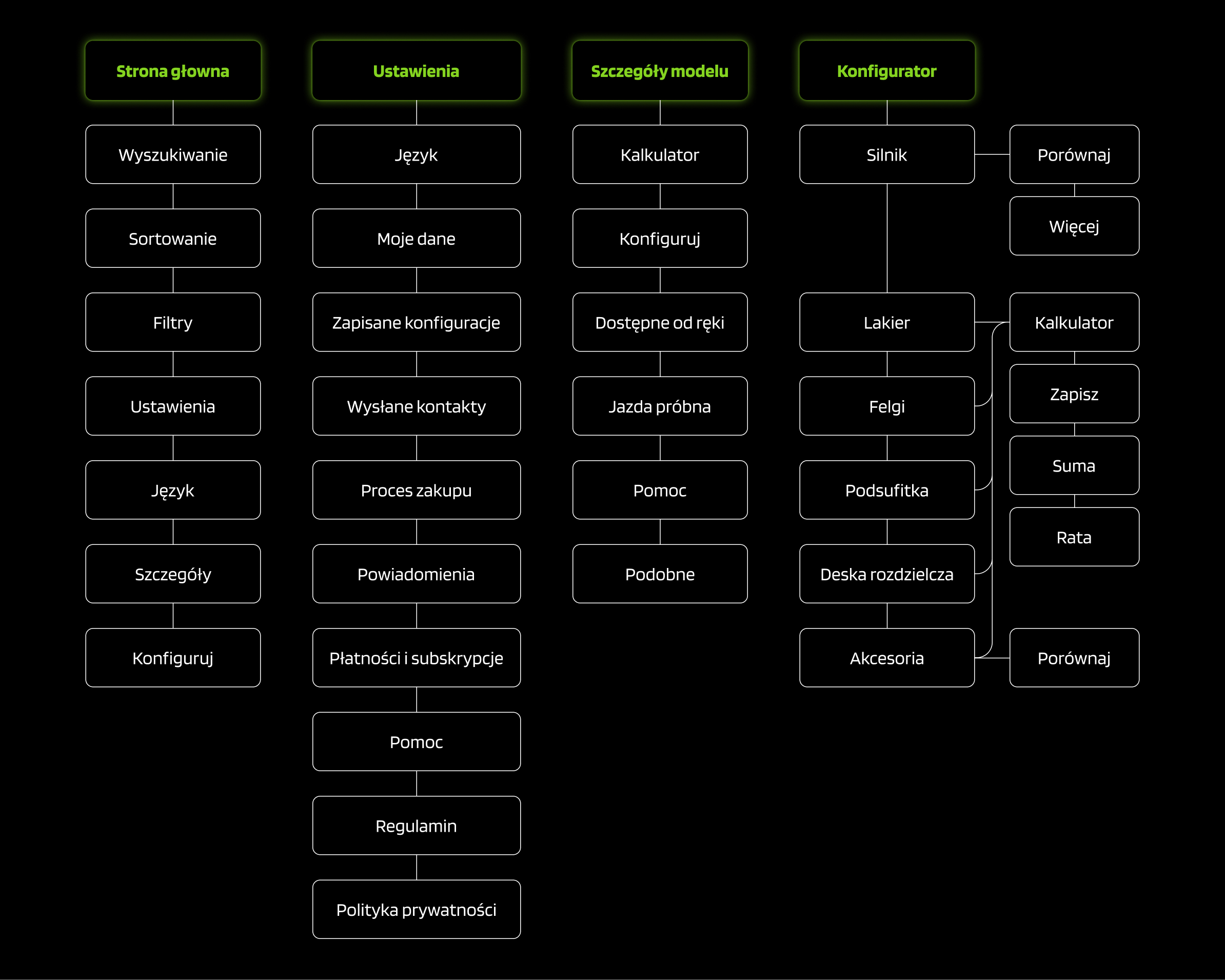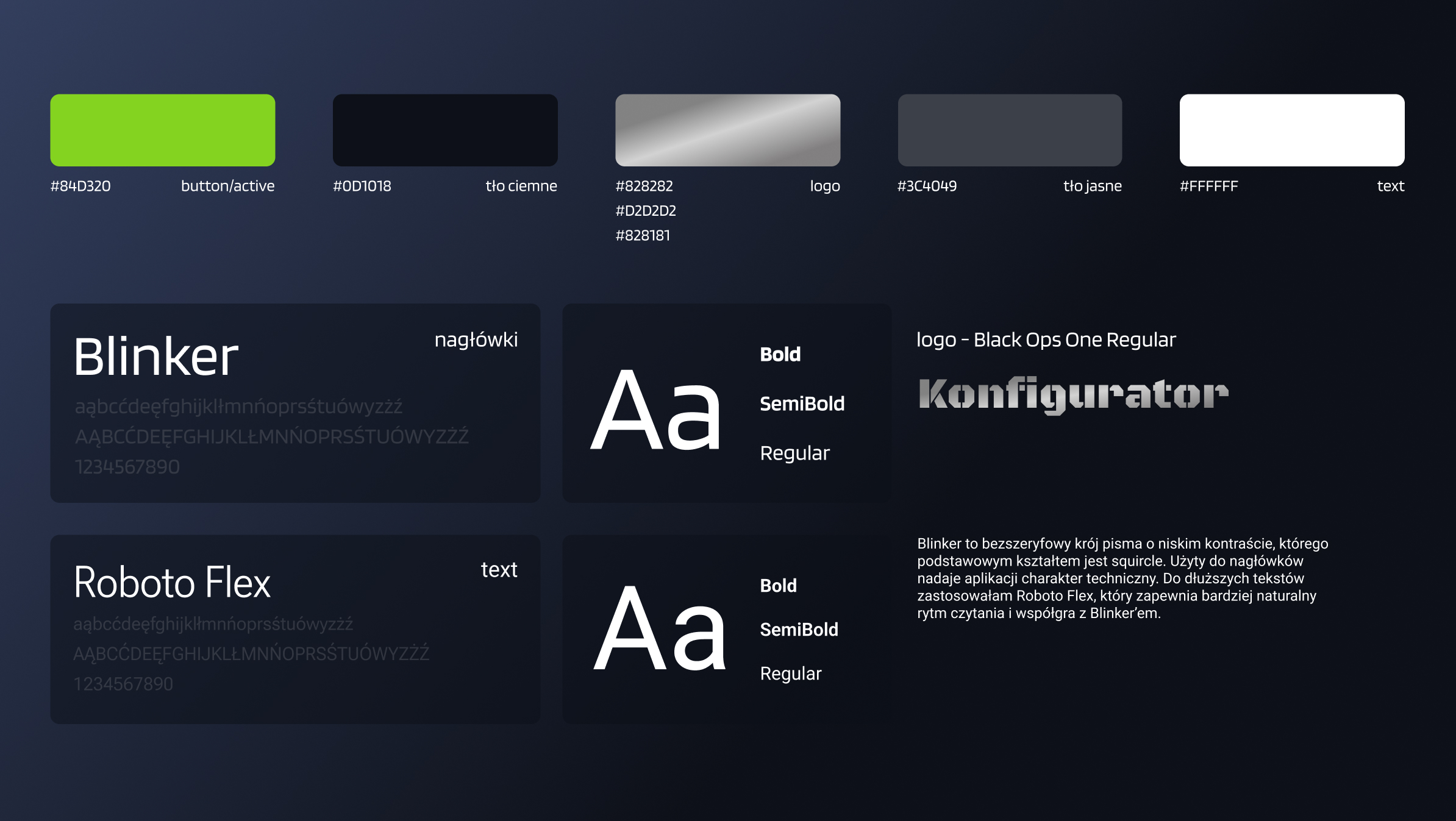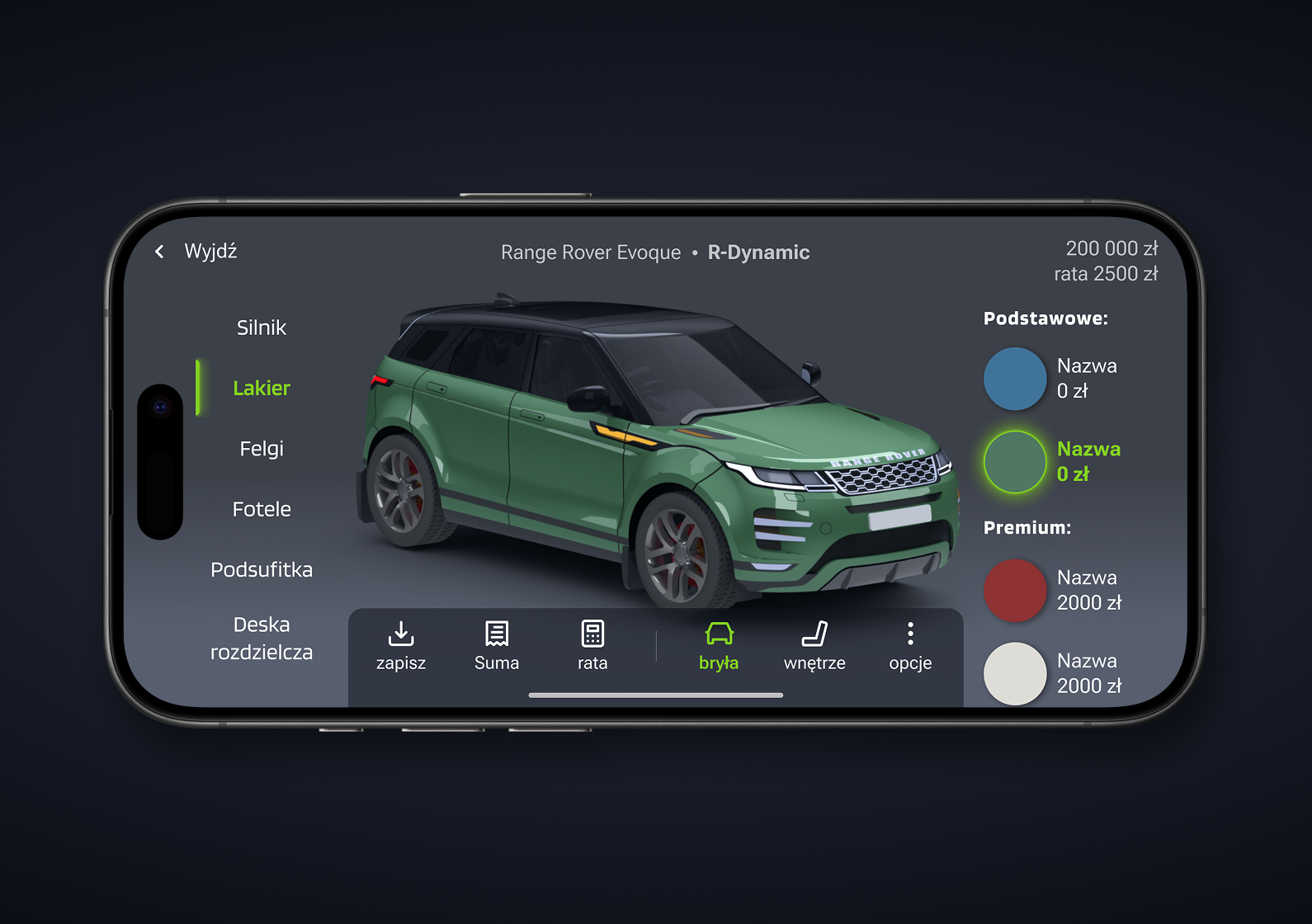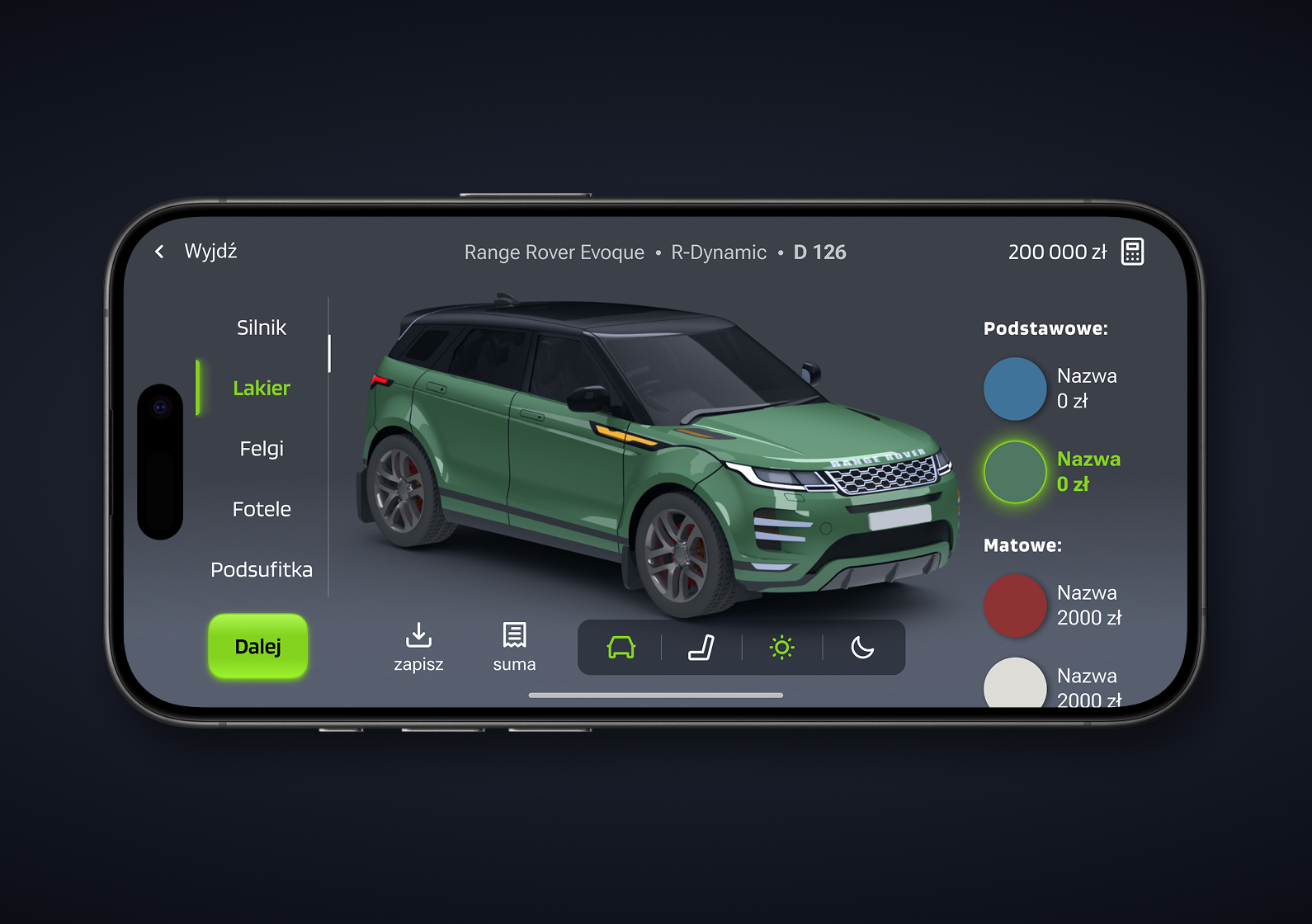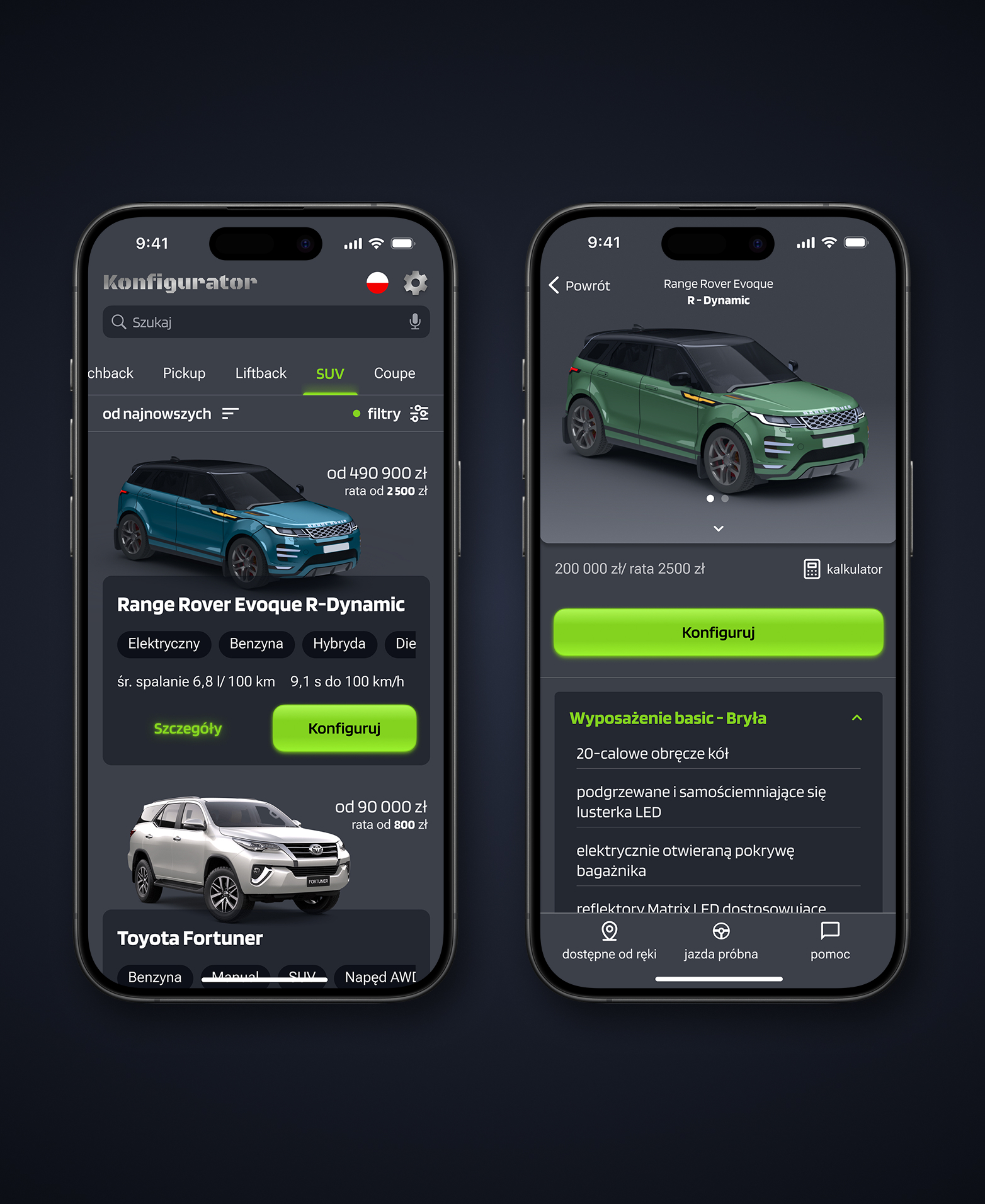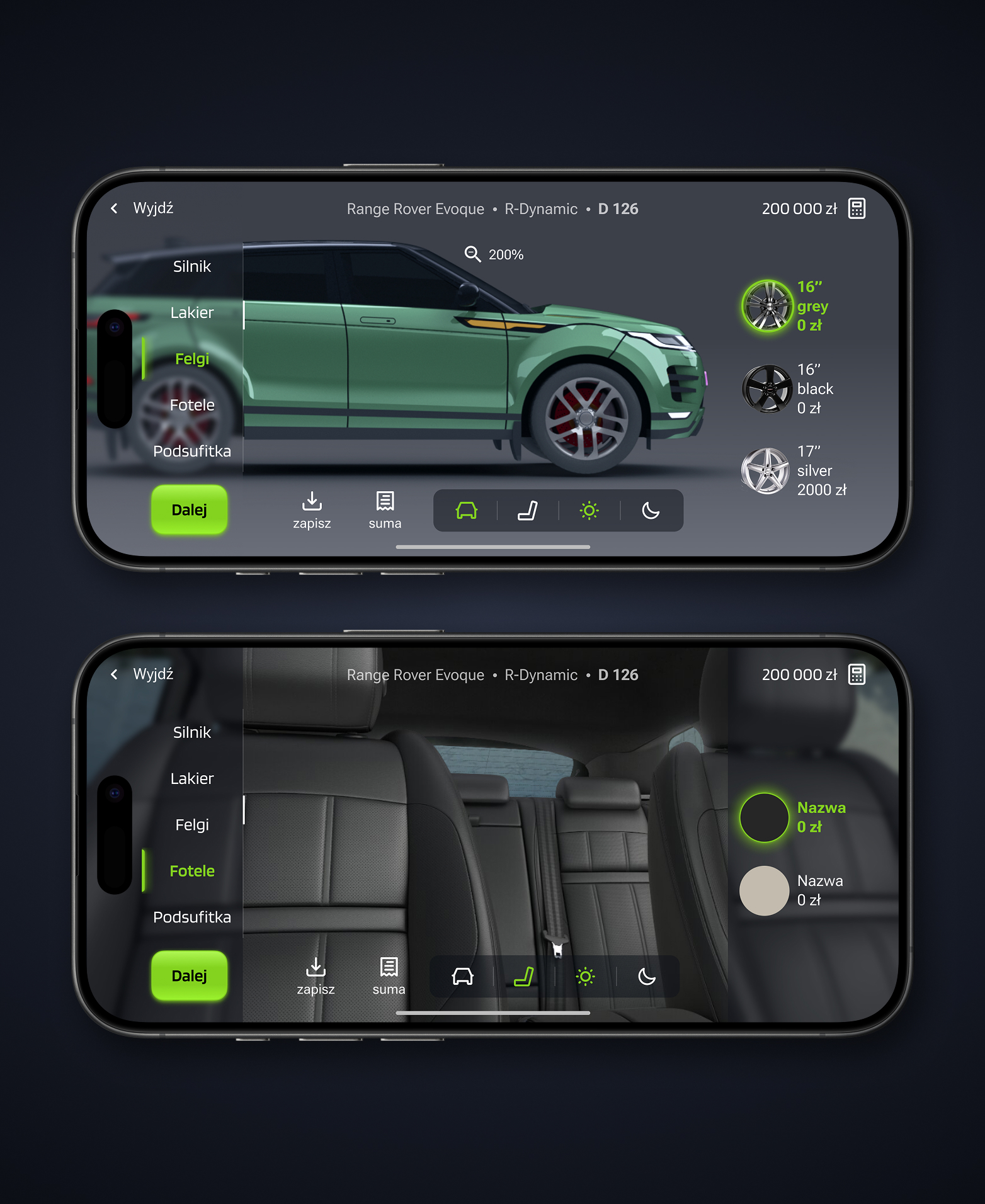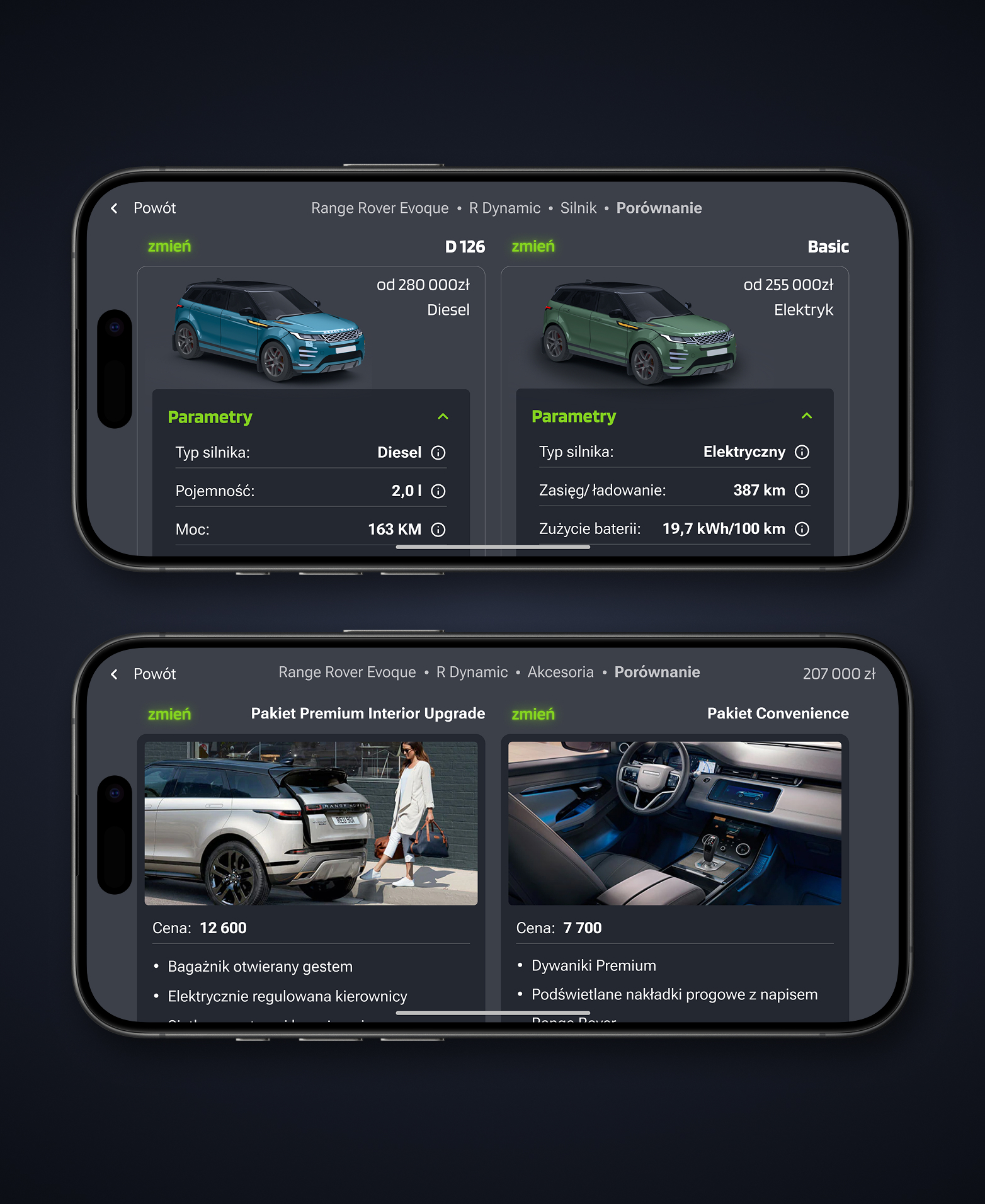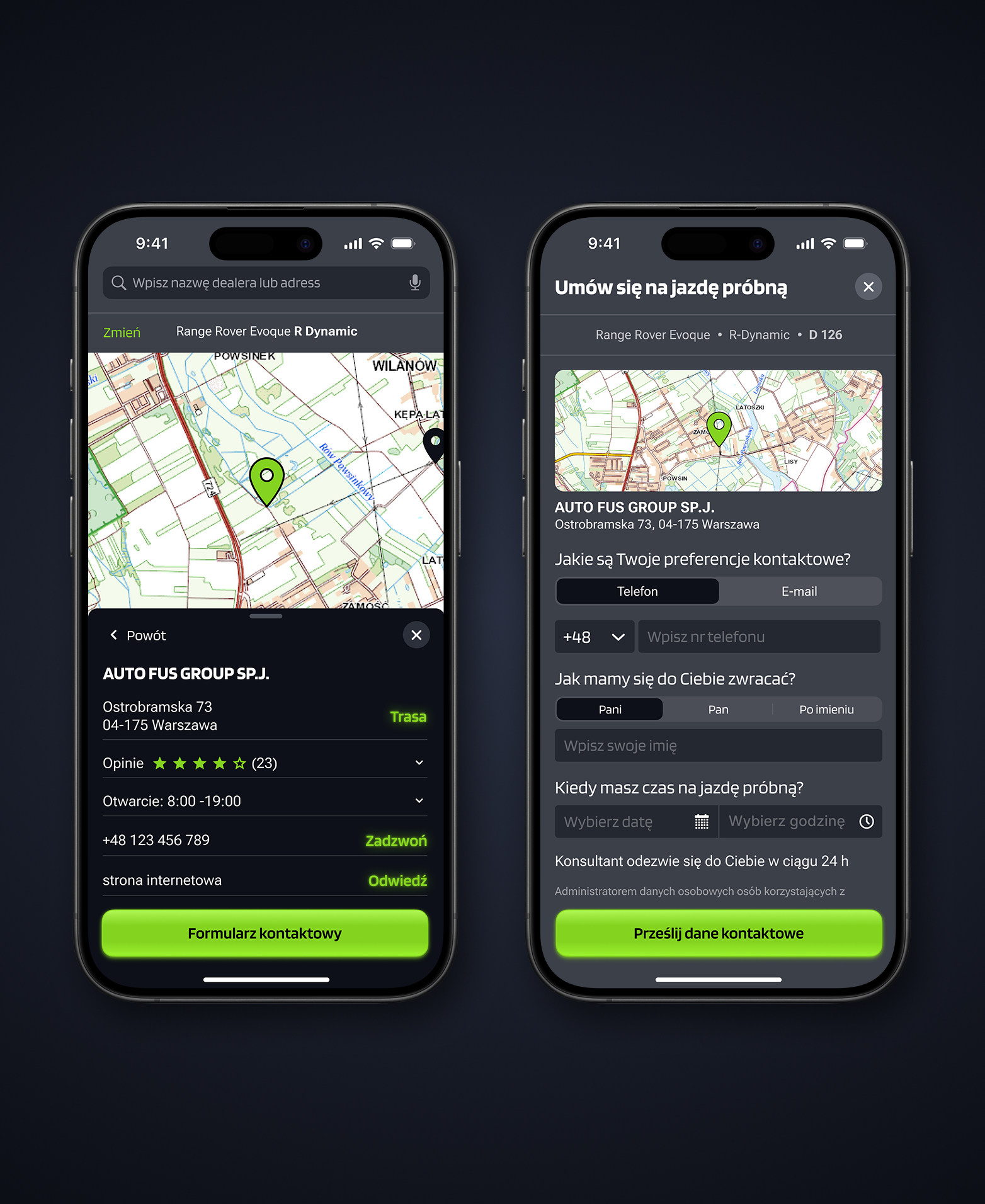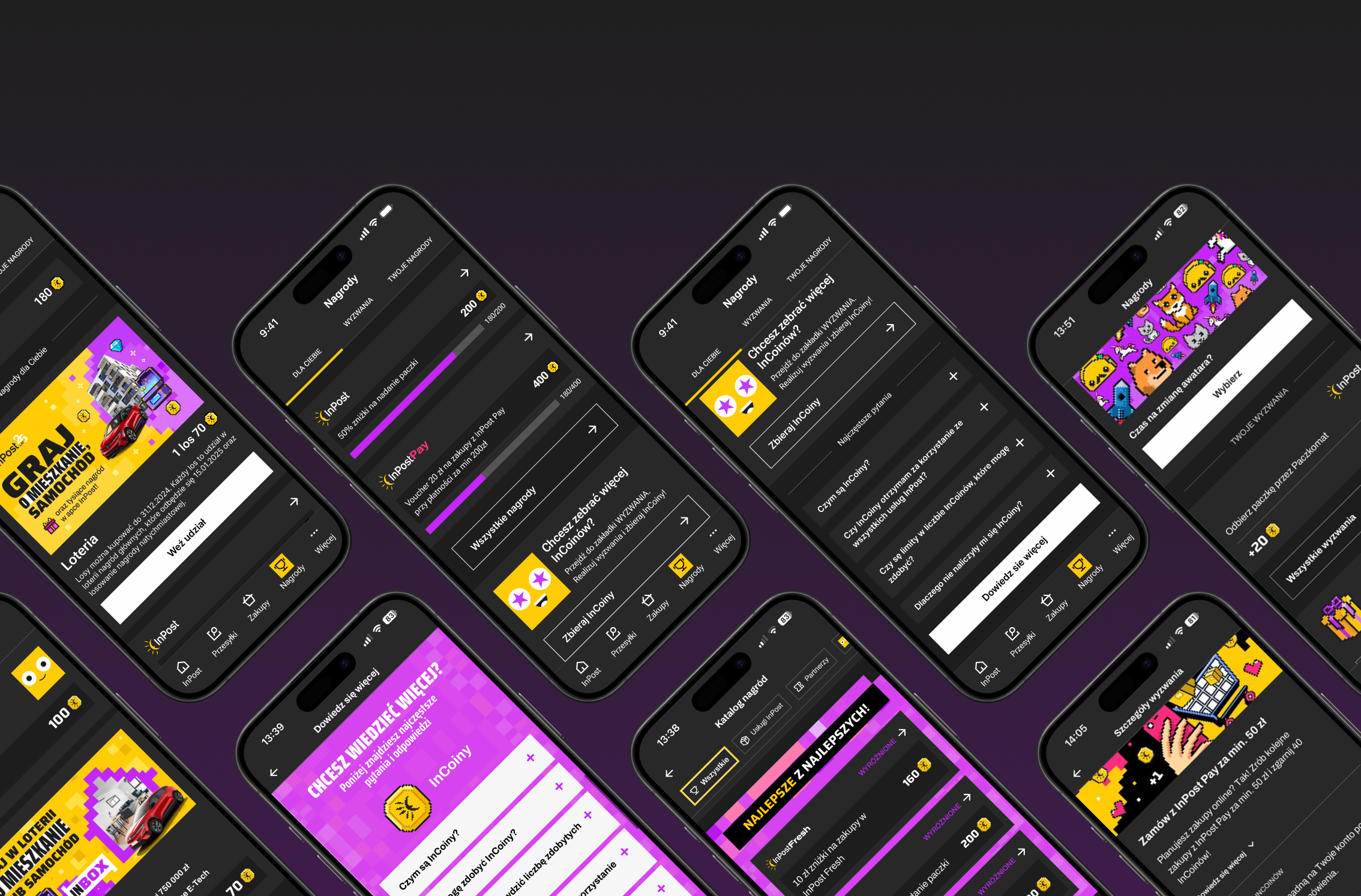Research & Discovery
We began with comprehensive research to understand user needs, pain points, and expectations when configuring vehicles on mobile devices.
Buyer Demographics
-
Age Range: 35-55 years
Established professionals in their peak earning years, with stable career paths and family commitments
-
Income: >7,000 PLN net monthly
High-income segment with significant disposable income and investment capability
-
Long-term Ownership Focus
Values quality and durability, typically keeps vehicles for 5+ years
-
Tech-Savvy Consumers
Comfortable with digital tools and expects modern shopping experiences
User Research
I gathered information through online communities, user interviews, and behavioral analysis.
Key User Insights
"It seems like this car could be designed in many different ways, but I can't fully take advantage of that because I don't understand it."
"Which package offers what I need and is reasonably priced? I would like to be able to compare them."
"I feel tired. I have to memorize descriptions, jump between sections, and compare. I have to figure out for myself what is changing and why."
Target User Characteristics
Our primary users are established professionals who prioritize:
-
Reliability
Seek assured technical condition and manufacturer warranty
-
Long-term Value
Plan for extended ownership and quality investment
-
Financial Stability
Have means for premium vehicle investment
-
Service Quality
Value professional support and service
User Pain Points
-
Overly complex configuration process causing confusion and drop-offs
-
Lack of clear information about differences between trim levels
-
Difficulty navigating and comparing options on mobile devices
-
Inadequate visual feedback when making configuration changes
-
Frustration with saving and retrieving configurations
Competitive Analysis
I analyzed mobile configurators from various automotive brands to identify pain points, best practices, and opportunities for innovation in the user experience.
Strengths to Adopt
- 360° visualization of vehicle configurations
- Step-by-step guided process with progress indicators
- Real-time price updates as options are selected
- Package recommendations based on selected features
Gaps to Address
- Poor explanation of feature benefits and differences between options
- Limited configuration comparison capabilities
- Hidden costs revealed late in the configuration process
- Cumbersome navigation between configuration stages
- Inconsistent presentation of content and information
User Personas
Katarzyna, 52
B2B Methodology Director
Hard-working and practical professional focused on finding transparent purchase options and quick vehicle access.
Nikodem, 25
Data Developer
Tech-savvy professional looking for innovative features and digital integration in vehicle configuration.
Key Research Takeaways
Streamlined Process
Users need a clear, step-by-step configuration process with the ability to easily navigate between sections.
Visual Feedback
Immediate visual representation of configuration changes is crucial for user engagement and decision-making.
Contextual Information
Users need clear explanations of features and differences between options to make informed decisions.
